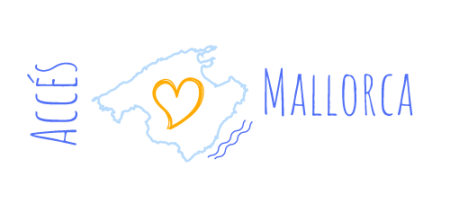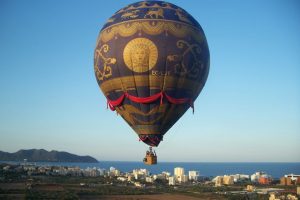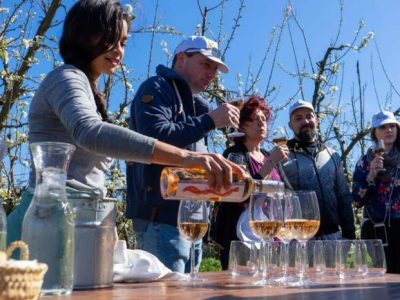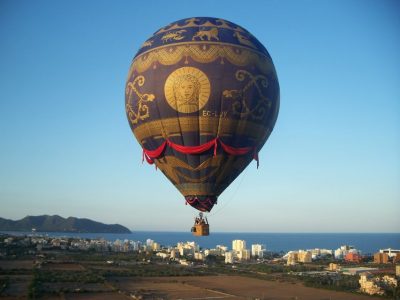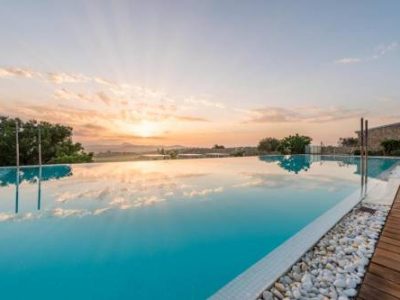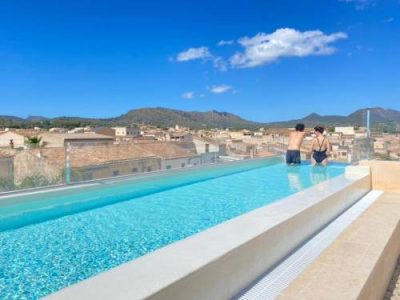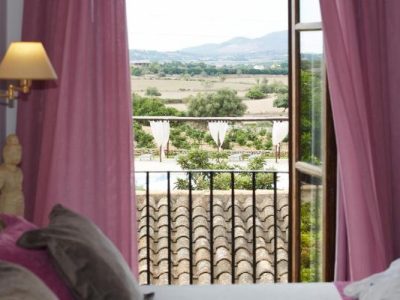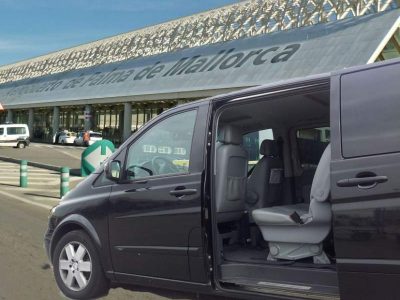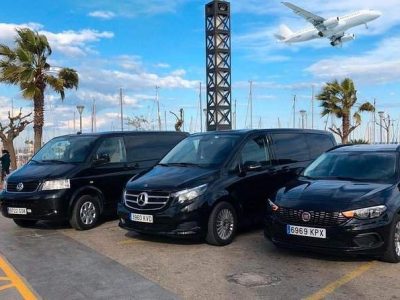All your holiday planning needs in one place, letting you book direct and benefit from official online rates
- Places To Go
- Things To Do
What’s Your Interest?
Traveling with kids
- Blog
Sant Llorenç des Cardassar, Things to do, hotels, market
Sant Llorenç des Cardassar is a town and municipality on the eastern side of Mallorca, which also includes the popular destinations, Cala Bona and Cala Millor.
Sant Llorenç des Cardassar is an ideal place to find accommodation if you need a romantic getaway in the countryside, in beautiful peaceful surroundings. Here are some beautiful country houses that have been transformed into wonderful accommodations with modern facilities, which give them a touch of luxury.
- I want to go!
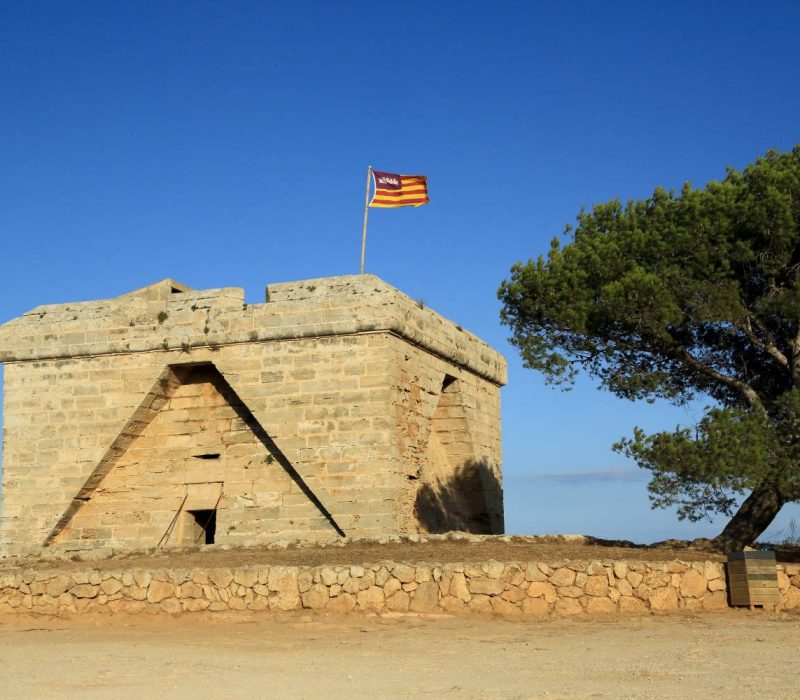
Why visit Sant Llorenç des Cardassar
Is Sant Llorenç des Cardassar worth visiting?
Sant Llorenç des Cardassar is a coastal municipality, famous for the stunning beaches of Cala Millor and Sa Coma.
Things to do in Sant Llorenç des Cardassar
Sant Llorenc is rich in history, which goes back to ancient times, about 1,100 BC, when the first settlers began the human occupation of these lands. At lot has happened from the Bronze Age to modern day well-developed tourism mecca. But one thing hasn’t changed; the fantastic landscapes.
ENJOY AN EXCURSION TO THE TALAYOTIC VILLAGE OF s’Illot
Visit the coastal fortress of Castell de sa Punta de n’Amer between Cala Millor and Sa Coma
The Church and church museum of Sant Llorenç des Cardassar
Enjoy the pristine nature of the Punta Amer headland
FAQ
Sant Llorenç des Cardassar is home to multiple great accommodation options. However, we recommend staying at the Cas Cabo Nou Agroturismo, Boutique Hotel Can Pocovi or Hotel Son Trobat.
Sant Llorenç des Cardassar is home to the beaches of Cala MIllor, Sa Coma and s’Illot. All of these are located approx. 3 km from the village itself. Cala Millor and Sa Coma beach are the widest beaches with the finest sand.
Events in Sant Llorenç des Cardassar
Weekly market in Sant Llorenç des Cardassar
Every Thursday from 8 in the morning, the weekly market is held in the Plaça de l’Esglesia (church square) in Sant Llorenç. The market of Sant Llorenç claims to be unique due to the broad selection of local products mixed with a vast series of socio-cultural activities to enjoy at the market.
Son Carrió: Fridays
Annual events and happenings
January
Calvacada de Reis
The arrival of the three kings is a beloved event that takes place in most villages on the island in the beginning of January. The three kings arrive with a parade to the town hall where the traditional “diferit” speech is read. After this, the three kings hand out presents for all the children gathered in the square. This event happens in the town of Sant Llorenç des Cardassar, the village of Son Carrió and in the town of Sa Coma.
Festes de Sant Antoni Abat
Sant Antoni Abat (Saint Anthony) is the protector of domestic animals, and therefore holds an important place in the culture of Mallorca, especially in the rural areas. The streets of Sant Llorenç des Cardassar are are illuminated by bonfires, and between these dances demons. The celebration of Sant Antoni showcases the fight between good and evil and is an important part of the Mallorcan culture
May
Fira Ramadera
Fira Ramadera is an agricultural fair held in the charming village of Son Carrió, located between Sant Llorenç and Sa Coma. The fair revolves around the agrarian lifestyle and everything related to this. You can experience live animals, local food and craft products, exhibitions and competitions. There are also tastings of tapas and products, as well as wine. In the streets there will be parades and traditional dances showing a popular part of the Mallorcan culture. The fair coincides with the celebration of Sant Miquel (Saint Michael), which is said to open the summer in Son Carrió.
July
Festes Sa Coma
Every year during the third week of July, Sa Coma celebrates itself with a range of fun activities aimed at tourists. There will be a series of sports competitions, games, markets, exhibitions, concerts and of course, plenty of food. One of the main highlights of the festival, is the Nits Multiculturals (Multicultural Night), a gastronomic night fair accompanied by various live bands. The bars and restaurants of Sa Coma are together in arranging this tasteful event, where you can taste the chef’s take on different international dishes. There is also a big paella competition.
August
Festes de Sant Llorenç & Fira Noctura
During the first half of August, the town celebrates its patron saint of Saint Lawrence with a series of fun and cultural events for all ages. Throughout the span of two weeks, you can enjoy a wide range of concerts, games, sports, markets, dances, exhibitions, workshops etc. There are also a rnage of gastronomical activities such as tastings of food, products and wine. Coinciding with the celebrations of the patron saint, you will find the annual Fira Noctura (night fair) included in the program. The night fair has been a part of the schedule since 1996 and continues to grow more popular each year. The night fair is held at the old train station and includes, beside from a big market, also a series of gastronomical offers and a popular race. The festivities of Sant Llorenç,is a really great time to visit the town, especially if you are already on vacation in one of the nearby resorts of Cala Millor, Sa Coma or s’Illot.
Festes de Mare de Déu Trobada
The celebrations of Our Lady of Good Encounter, is a religious celebration held in Sant Llorenç each year in August. The festivities are inaugurated with a floral offering to Our Lady, following by a full program of religious and cultural events during the day.
September
Tourism Festival
During the last week of September, Son Servera and Sant Llorenç de Cardarssar joins up and arranges one of the most extensive festivals of the year, the Tourism Festival. All over the areas of Son Servera, Sant Llorenç des Cardarssar, Cala Bona and Cala Millor, you can look forward to a full stacked program of fun, cultural and tasteful activities. On the tapas routes, you can get unique and delicious tapas and pinxos for almost no money, along with free tapas tastings in some of the hotels and bars. There will be a series of fun sports competitions and games, such as a beach volley tournament or the traditional Catalan Human Tower competition. There is also opportunity to meet some of Mallorca’s most beloved traditions such as the dancing giants and firework shows. Exhibitions and extended markets, workshops, open house events in the Pula Golf and other leisure businesses and of course a lot of concerts to set the mood. It is an entire week of just fun and good times, and a really good time to be visiting!
Festes de Santa Maria
The celebration of Santa Maria in Sa Coma is held during the second week of September. This week is dedicated to the community of Sa Coma, with open-air community dinners, workshops, talks, family games, dances etc.
Festes de Sant Miquel de Son Carrió
In May the celebration of Sant Miquel opens the summer and in September it closes it. Where the festivities in May coincides with the Fira Ramadera (agri-fair), this celebration solely focuses on the traditional Mallorcan roots. Experience dancing cabezudos (figures with giant heads), solemn mass, choir concert and the xeremiers (Mallorcan bagpipers) play. Also, readings, exhibitions and open-air dinners are on the menu when the patron saint of Son Carrió is honored in September.
December
Mercadet de Nadal
In the second week of December, the town of Sant Llorenç is illuminated in cozy lights and Christmas decorations while the annual Christmas fair is held in the heart of the town. All the shops of the town bring out their Christmas products and put them on sale, while bands play music to set the perfect mood and Christmas atmosphere. If you haven’t tried December and Christmas time in a village in Mallorca, you should really consider doing so because it is special.
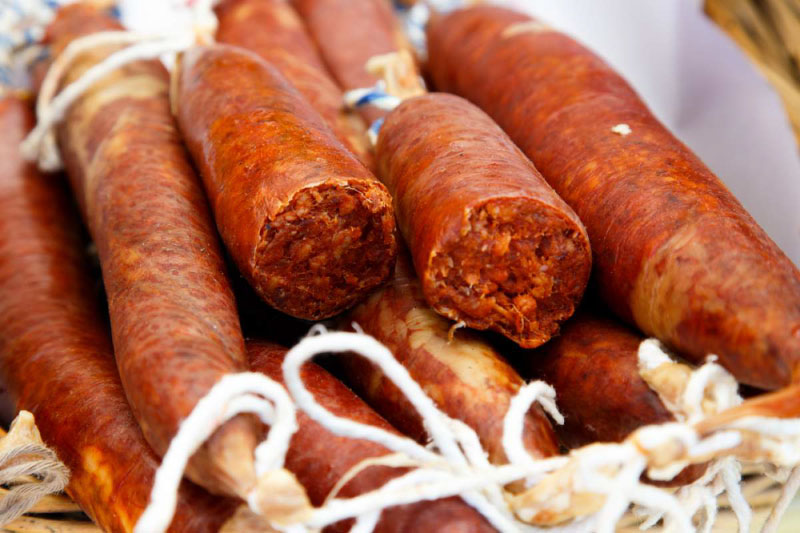
Support Local
Supporting local communities during your travels can have a profound impact. Stock up with groceries locally, stop in an artisan shop or enjoy a refreshment at a restaurant or bar. Now more than ever, these small businesses need support from travelers near and far.
Get to know the area of Sant Llorenç des Cardassar
About the area of Sant Llorenç des Cardassar
Sant Llorenç des Cardassar is a town and municipality in the Llevant region of Mallorca, comprising the town itself, the village of Son Carrió, but also the well-known and beloved beach areas of Cala Millor, Sa Coma and s’Illot, which are administratively shared with the municipalities of Manacor and Son Servera.
Sant Llorenç des Cardassar is a popular holiday destination, especially for those seeking tranquil surroundings, natural charm and freedom in self-catering in a villa.
History of Sant Llorenç des Cardassar
Prehistory
We begin our journey back in time, in the Talayotic and post-Talayotic culture of the Balearic Islands, about 1100 – 123 BC. From this period, we find the Poblat Talaiot de s’Illot located in the back alleys of the popular beach resort of same name, which was an entire enclosed village.
The Talayotic/Talaiotic culture was unique for the Balearic Islands, especially Mallorca and Menorca. The most recognized theories about the Talayotic culture, is that it was created by early day colonizers arriving to the islands from ancient Greece and blended with the indigenous peoples. The prehistoric village of s’Illot was also unique because of its location close to the coastline, unusual to Talayotic settlements, as this would give a higher risk of threats from the sea. However, this could also very well be the first fishing village of Mallorca.
There were in fact also several other Talayotic establishments in the current area of Sant Llorenç des Cardassar, i.e. on the rocky headland of Punta de n’Amer, the one of na Pol and one in Cala Marlanda. The village of s’Illot could very well have been the central meeting point for the many smaller villages scattered in the area, and the place to go for trading and veneration.
Actually, there has been discovered more than 40 different archaeological sites within the current municipal border, making Sant Llorenç des Cardassar a true El Dorado for amateur archaeologists and anyone interested in this subject.
Roman occupation (123 BC – 345)
From around 123 BC, Mallorca became part of the western Roman empire, an important strategic goal of the Romans who could benefit and prosper from controlling the Mediterranean. Following their landing on the island, they begun a long a tiring quest to locate and fight the indigenous peoples who was hiding in the many Talayotic villages, such as the walled enclosure of s’Illot, and caves on the island. Eventually, the Roman army succeeded, as the native savages and warriors were no match for an organized army of trained soldiers. However, it is important to mention, that the Romans had done several attempts earlier to conquer Mallorca but failed as the indigenous warriors (slingers) had managed to sink their ships from the coastline. This is an important fact, as this tells us about ancient warfare, but also about the prehistoric life in the coastal area such as the Talayotic community of s’Illot.
Byzantine times (534 – 700+?)
The Byzantine period refers to the period from the year 534 and a couple of centuries forward. In the centuries following the fall of the western Roman empire, around the middle of the 4th century, the eastern Roman empire started to expand and rebuild.
It was Justinian I whom ordered the recapture of the Balearic Islands, and when his generals triumphed in doing so, he incorporated the islands into the Mauritània Tingitana, current day Morocco.
One of the most interesting aspects of the Byzantine period in Mallorca, was the introduction of Christianity. Actually, one of the best evidences of the early Christian communities, is the excavation of the paleo-Christian basilica of Son Pereto located somewhat on the border of Sant Llorenç and Manacor. At the excavation site, which by the way is open to tourists, you can see the baptistery, the altar and former graves.
The Islamic Mallorca (903 – 1229)
Around 903, Mallorca and the other Balearic Islands was incorporated into the Emirate of Cordoba and the Muslim world. The Balearic archipelago came under the Umayyad dynasty, and prospered greatly from piracy in the Mediterranean. It was mainly from the capital of Mallorca, Madina Mayurqua, that piracy campaigns were launched. People living outside the capital were mainly farmers living in tribal communities scattered in the countryside. Beside from Madina Mayurqua, there was only a few small villages, or rather assemblages of farmhouses, found on the island. Most habitation areas consisted of farmsteads and cottages spread widely.The Moors divided the island in some thirteen districts, the so-called “ajza” (singular: juz), whereof the area of Sant Llorenç belonged under the Juz d’ Manacur, which also comprised the areas of current day Manacor, Felanitx, Santanyí, Ses Salines, Campos and Porreres.
The Catalan-Aragonese conquest
In the beginning of September 1229,the Christian troops of Catalonia and Aragón landed at the shores of Santa Ponsa in the south-western part of Mallorca with 150 ships. The campaign of conquering Mallorca and the Balearic Islands was a another strategic goal in the Reconquista, a series of wars between Christians and Muslims in the Mediterranean. On December 31, King Jaume I of Aragón called himself victorious after defeating the Moorish walí in the Almudaina in Palma, at that time Madina Mayurqua. The city was renamed to “Ciutat de Mallorca”, simply put, City of Mallorca.
During the spring of 1231, Kings Jaume’s troops marched through the eastern areas of Mallorca fighting down any Muslim resistance on their path. The resistance from the Moorish farmers was little or none at all, as they were simple peaceful farmers. There is no documentation of any major battles in the area of Sant Llorenç.
In the time following the conquest of Mallorca, the king divided the lands of the island among his supporters, participants and the church. This particular area was granted the count, Nunó Sanç de Rosselló, whom led some of the most important parts of the military campaign due to his knowledge of the area and allies in Muslim tycoons.
The new Christian settlers quickly begin the process of converting Muslims, taking them as slaves and change the place names of the farms and areas. In 1236, the construction of a church had already begun, probably by a decreed of Ferrer de Pallarès, the provost of Tarragona. The church was built in a farmstead known as “Bellver”, probably current day property of Son Vives, Already in 1248, the church of Santa Maria de Bellver was documented in a papal by Pope Innocence IV. In the church was an image or figure of Sant Llorenç (Saint Lawrence) which was venerated by the small congregation, and which gave rise to the first name of the small village of houses which was built around the church; Sant Llorenç de Bellver.
The modern age
As of 1519, the village became known as Sant Llorenç des Cardassar and comprised an urban nucleus of about 40 houses surrounding the church. The word “Cardassar”, means “thistles” in English.
During the 16th and 17th century, Mallorca faced a brutal threat from the seaside. The Ottoman empire had allied itself with Berber privateers from North Africa and was constantly lurking in the sea interrupting maritime commerce, as well as attacking the coastal areas of the Balearic Islands. Pirate raids cost many lives and money during the 16th century, until the Mallorcans found a solution.
A big part of the solution, was the erection of watchtowers along the coastlines of the island whose purpose was to alarm the population whenever a hostile vessel was getting close. On the headland of Punta de n’Amer, a tower was erected to communicate with the neighboring towers of Porto Cristo (Torre dels Serrals de Falcons) and Cap Vermell. The towers communicated using smoke signals and flags to pass the alarm until it reached the villages and the men could prepare for battle. However, after a brutal raid in 1612, the Grand and General Council of Mallorca grated the people of Manacor permission to expand and enhance the fortification of Punta de n’Amer.
The new fortress was unique because of its square plant, moat dug in the rocks and the large dents in the walls which prevented attackers from climbing. Due to the massive activity during these years and the central location of the fortress, the fortification had 3 turrets operated by 3-4 armed soldiers.
The establishment of the town
In the 18th century, the small agricultural community started to gain importance and saw an increase in population. The four original streets conducting the village were planted; Carrer Major, Carrer Pou, Carrer Santa Maria de Bellver and Carrer Carrerillo. Another important element of the infrastructure added at this time, was the Pou Vell (old well), the main water supply for the inhabitants. In 1776 and again in 1806, Sant Llorenç made an attempt to segregate from Manacor but failed.
Municipal independence and development of Son Carrió
Somewhat in the middle of the 19th century, a trend of parceling the last really large possessions of the island came to Sant Llorenç as well. In 1860, with the continuing demographic development in the area, the lands of the Son Carrió possession was too parceled and sold to new landowners from the neighboring areas. The first village that erected from the possession was actually known as “Sant Miquel”, which also came to be the name of the church constructed between 1868 and 1873. The plot of the church was donated by Joan Lliteres Llull, which was right next to his shop. With the new church and the arrival of the Franciscan nuns in 1899, the population growth accelerated even further. Actually, the congregation grew so fast that already in 1907, a new parish church was inaugurated, designed by Antoni Alcover and Joan Guasp and later modified by Antoni Gaudi and Joan Rubio i Bellver. The first mayor of Son Carrió was Miquel Galmés Llull.
In the years between 1885 and 1893, most of the remaining possessions in the area were divided in smaller plots of land and sold, which caused an even greater increase in the population.
As with all other villages and municipalities, the Constitution of Cadíz from 1812 allowed municipalities of 1,000 or more inhabitants to become independent. This was the first time that Sant Llorenç des Cardassar gained independence from Manacor. However, as the story is, the return to the former constellation was a fact already in 1814.
Finally, on July 3rd, 1892, Sant Llorenç achieved status as an independent municipality administratively free of Manacor. The first city council was instated with Bartomeu Umbert Cabrer elected mayor.
The parochial church was reconstructed or modified by architect, Guillem Forteza, in 1913.
The economical change of tourism
From the 18th century, the main economical activities consisted of cultivation of dry land and raising livestock. The cereal industry is very well exhibited in the many old mills found on the outskirts and inside the urban nucleus of the town. The first mills occurred outside the town center, but due to the high demand six mills was confined within the urban perimeter in the middle of the 20th century. Beside from cereals, the area also has a long tradition of raising cattle, sheep, pigs, goats and poultry, as well as activities in the embroidery and a small carpentry industries.
In 1948, a permission to parcel the coastal areas of s’Illot, or Cala Moreia, was granted, which gave rise to brand new residential areas. In 1910, the population counted 2,883 inhabitants, and in 1950, 3,830 inhabitants.
In the late 1950’s, tourism became an economical activity in the area. In 1964, the first hotels appeared on the beach of s’Illot next to the torrent of Ca n’Amer. In the same period the first hotels in Cala Millor was inaugurated; Eureka and Sabina.
In the 1980’s the village of Sa Coma erected between s’Illot and the headland of Punta de n’Amer.
Today, tourism has become the main source of income in Sant Llorenç due to the development of Cala Millor, Sa Coma and s’Illot.
Practical Info
Useful Numbers
Emergency: 112
National police: 091
Local police: 092
Guarda civil: 062
Fire: 080
Maritime emergencies: 900 202 202
Town Hall: +34 971 83 83 93
Public Transport
Bus lines: 411
Power Supply
220V
